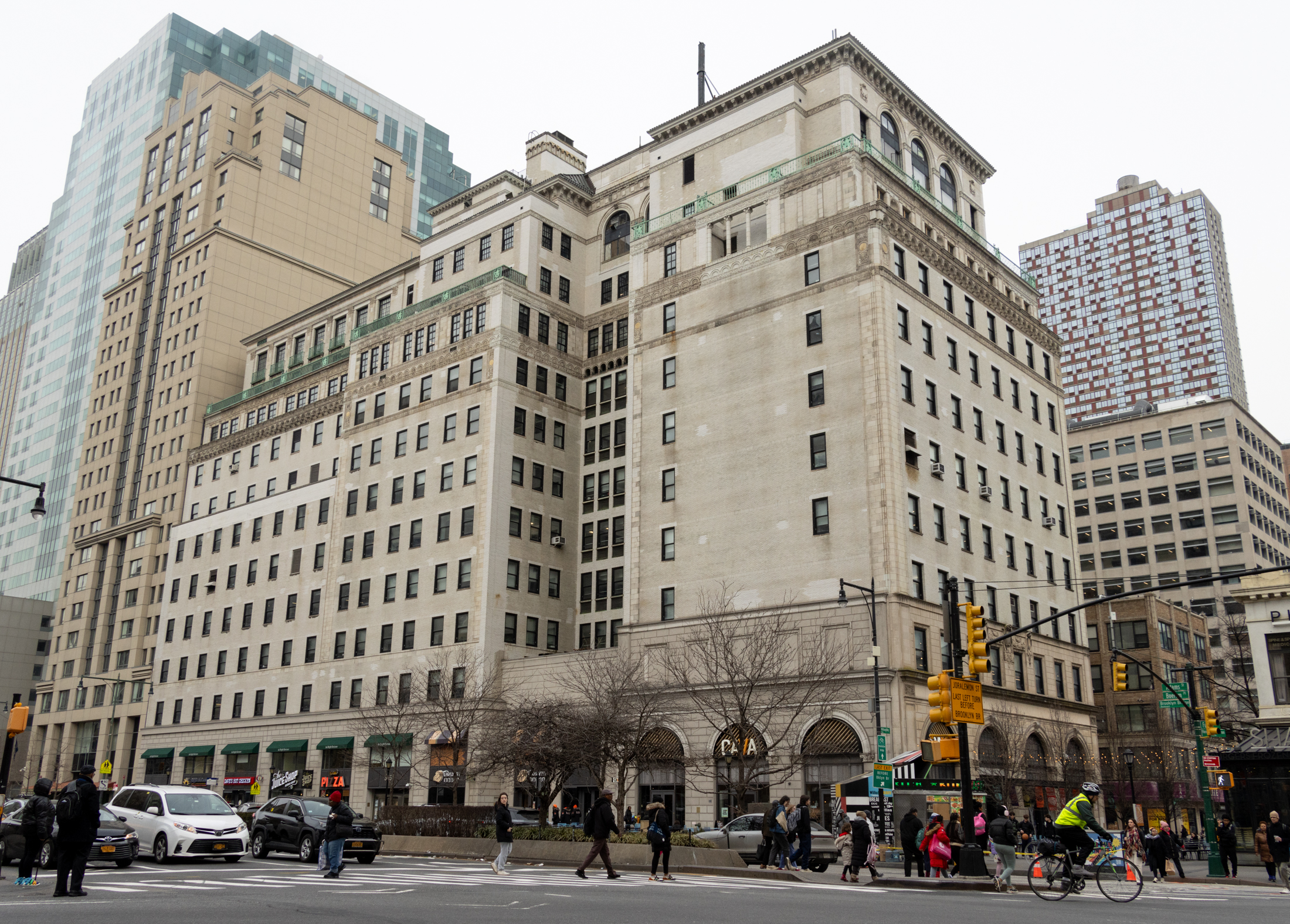Building of the Day: 99 Ryerson Street
Brooklyn, one building at a time. Name: Wood-framed row house Address: 99 Ryerson Street Cross Streets: Myrtle and Park avenues Neighborhood: Wallabout Year Built: 1850s Architectural Style: Italianate, underneath all that siding Architect: Unknown Landmarked: No The story: Underneath this rather uninspiring façade is an Italianate clapboard framed row house. What makes it special among…

Brooklyn, one building at a time.
Name: Wood-framed row house
Address: 99 Ryerson Street
Cross Streets: Myrtle and Park avenues
Neighborhood: Wallabout
Year Built: 1850s
Architectural Style: Italianate, underneath all that siding
Architect: Unknown
Landmarked: No
The story: Underneath this rather uninspiring façade is an Italianate clapboard framed row house. What makes it special among all the other covered-up, remuddled pre-Civil War houses on this block is that this is the last remaining home of the great Brooklyn (and American) poet, Walt Whitman. From this house in 1855, Whitman penned his greatest and best known work, Leaves of Grass.
Whitman is everywhere these days, most noticeably in a commercial for Apple. He lived in Brooklyn for 28 years, and during that time supported himself as a carpenter, a teacher, a journalist and a government clerk, while all the while writing his poetry and essays. For two years, between 1846 and 1848, he was the editor of the Brooklyn Eagle. He lost his job when he sided, in an editorial in the Eagle, with the “Free Soil” wing of the Democratic Party. Unfortunately, the Eagle’s owner, his boss, sided with the other side. Instant unemployment.
Leaves of Grass was Whitman’s opus, a collection of poetry that he would edit, refine, and edit again until his death. He paid for the first printing himself, and printed it at a Brooklyn printshop when the workmen were on breaks. 795 copies were printed. Whitman received much attention, both good and bad, from this seminal work. He was hailed by Ralph Waldo Emerson, who wrote a very flattering five page letter to Whitman, praising him for a “most extraordinary piece of wit and wisdom that America has yet contributed.” Many other critics were horrified and highly offended at the sensuality of some of the verses, and were quick to call Leaves of Grass, “trashy, profane & obscene.”
All of those letters of praise and damnation came to this house.
It’s rather amazing that Whitman’s only remaining home should have no plaque, or was never in its long history bought by Whitman devotees or even the city or state, to be preserved for posterity. We’ve certainly preserved the homes of those who contributed far less. The house is in a neighborhood that has the distinction of having the largest collection of pre-Civil War houses in New York City; a collection that covers several blocks, and includes homes that look very similar to how they looked when they were built, and those that have been covered up, re-muddled, refaced and altered over the years. Because this neighborhood is not landmarked, many of the houses have been torn down, and there is great fear that more could follow, as no one cares about vinyl covered wooden houses, anyway.
In 1857, Whitman began working for the Brooklyn Daily Times as an editor, his duties including writing book reviews and editorials. He managed to hold on to this job for two years, but left in 1859. When the Civil War broke out, his brother George enlisted. In 1862, he was lost after a battle, and Whitman left Brooklyn to look for him. He found him, unhurt, but stayed in Washington DC to volunteer as a male nurse to take care of the wounded. He never returned to this house.
Walt Whitman, after many adventures and rises and falls, died in 1892 in Camden, NJ. The building that housed the printing press that first pressed Leaves of Grass was torn down for the building of Cadman Plaza housing. Whitman devotees and scholars know about this building, but so far, no one has offered to preserve or memorialize it in any way. Although I have some issues with Whitman’s stance on the anti-slavery movement and black folks in general, there is still no arguing that he was one of the most influential and important poets in American history, and much of his writing is really, really brilliant. It’s really a shame that there is nothing to commemorate that here at 99 Ryerson Street. GMAP
(Photograph: 99 Ryerson Street, above, Christopher Bride for PropertyShark. Photo of Walt Whitman, below, Wikipedia.)











I, too, used to own a house on this block and read the New Yorker article. Apparently a lot of the block was developed by Walt Whitman’s mother, who owned and lived in this house.
The house we owned had very nicely proportioned rooms and beautiful wide plank floors but the same lovely aluminum siding as a large portion of the block.
I read that the house was built as a two-story and a third story was added later. It may have been similar to the houses on either side.
I used to live on that block just a few houses down from this one and owned property there for many years. There was a n interesting mention of this house in The New Yorker about 15 or 20 years ago. To me this was always a great block, absolutely unpretentious and neighborly (IMHO).